 The United States dropped three times the total tonnage used in both World War II and the Korean War on Vietnam and sprayed 20 million gallons of herbicides on South Vietnam during the Second Indochina War (also known as the “Vietnam War” or the “Resistance War against America”), making it one of the most disastrous wars in the 20th century.
The United States dropped three times the total tonnage used in both World War II and the Korean War on Vietnam and sprayed 20 million gallons of herbicides on South Vietnam during the Second Indochina War (also known as the “Vietnam War” or the “Resistance War against America”), making it one of the most disastrous wars in the 20th century.
While bombing has been shown to not have long-term impacts on Vietnam, how does historical herbicide exposure affect current education and employment outcomes? Using an instrumental variable approach based on district proximity to the closest National Liberation Front or Viet Cong and North Vietnamese Army base, I find that herbicide exposure leads to fewer years of schooling and a higher likelihood of being unemployed. The main mechanism lies in herbicides’ environmental effects, which present nutrient challenges, limit career options, and hinder the district’s catch-up growth. The environmental effects persist because the rice-destroying chemical is enduring in the environment, and large-scale spraying missions destroy biodiversity and inhibit sustainable environment regeneration.


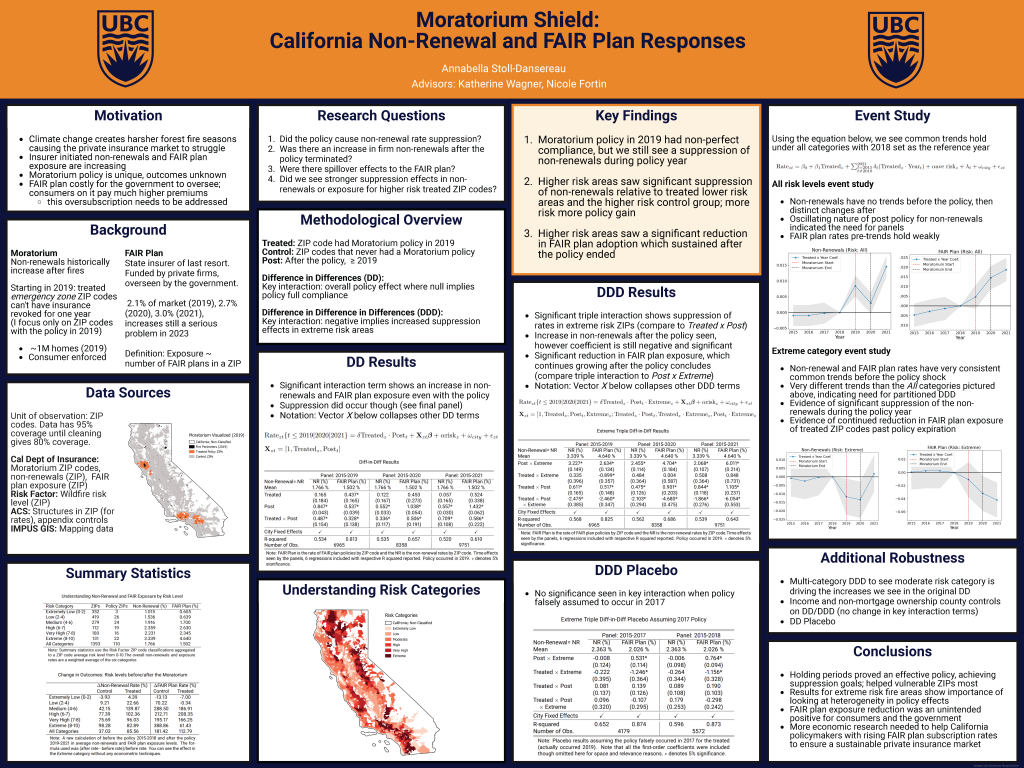

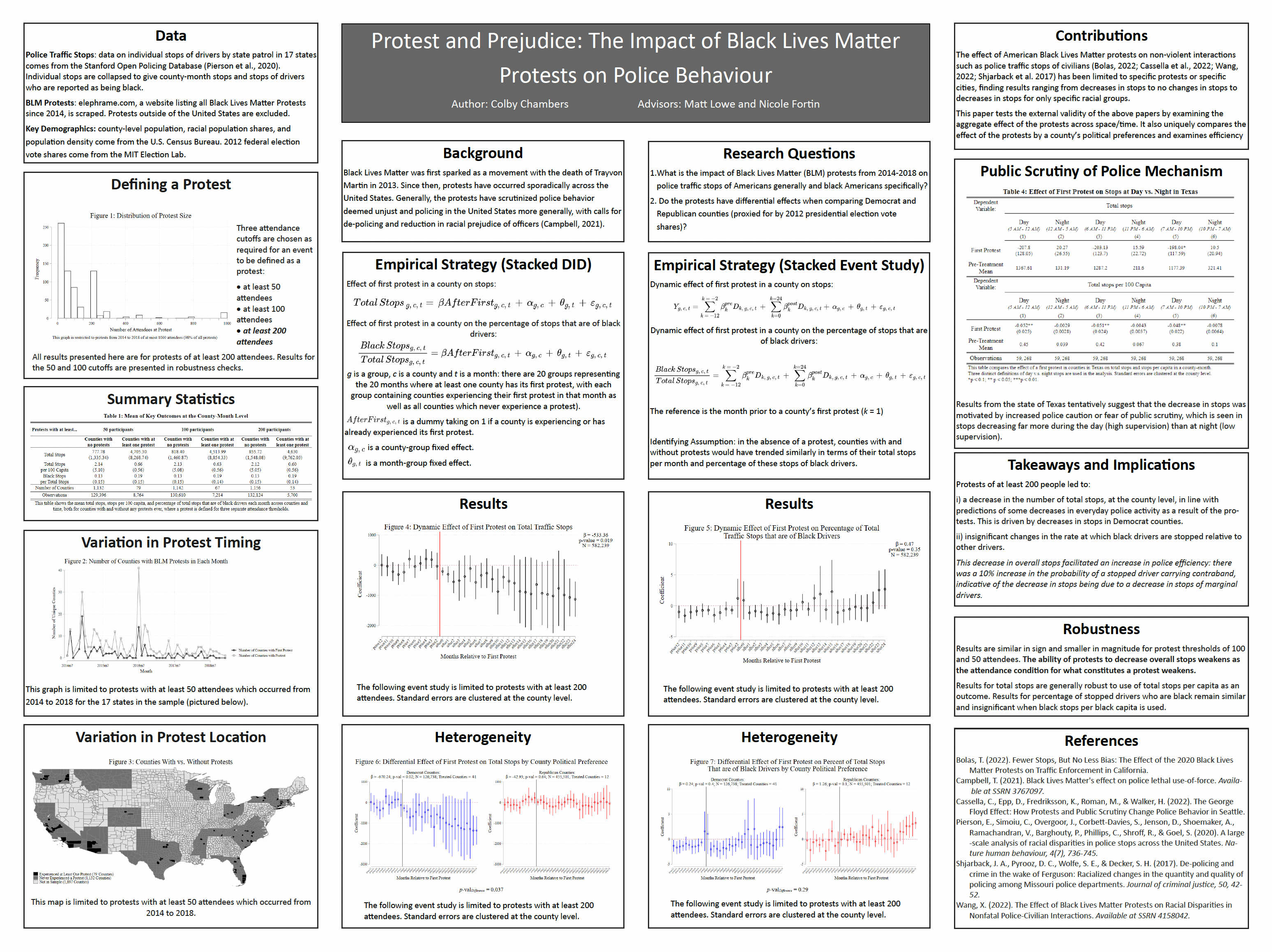
 Unencumbered access to abortion allows women to avoid mistimed pregnancies and their associated health risks. I assess the adverse health consequences of reduced access to abortion by examining a Texas policy change which forced the closure of many abortion clinics in the state. Using a TWFE DID research design across time and Texas counties, I estimate the effect of an increase in distance to the closest abortion clinic on Severe Maternal Morbidity (SMM), a measure of childbirth complications. I find that the Texas law led to increases in SMM across counties, driven by low-income women. These results underline the importance of considering distributional health consequences associated with a reduction in abortion access.
Unencumbered access to abortion allows women to avoid mistimed pregnancies and their associated health risks. I assess the adverse health consequences of reduced access to abortion by examining a Texas policy change which forced the closure of many abortion clinics in the state. Using a TWFE DID research design across time and Texas counties, I estimate the effect of an increase in distance to the closest abortion clinic on Severe Maternal Morbidity (SMM), a measure of childbirth complications. I find that the Texas law led to increases in SMM across counties, driven by low-income women. These results underline the importance of considering distributional health consequences associated with a reduction in abortion access.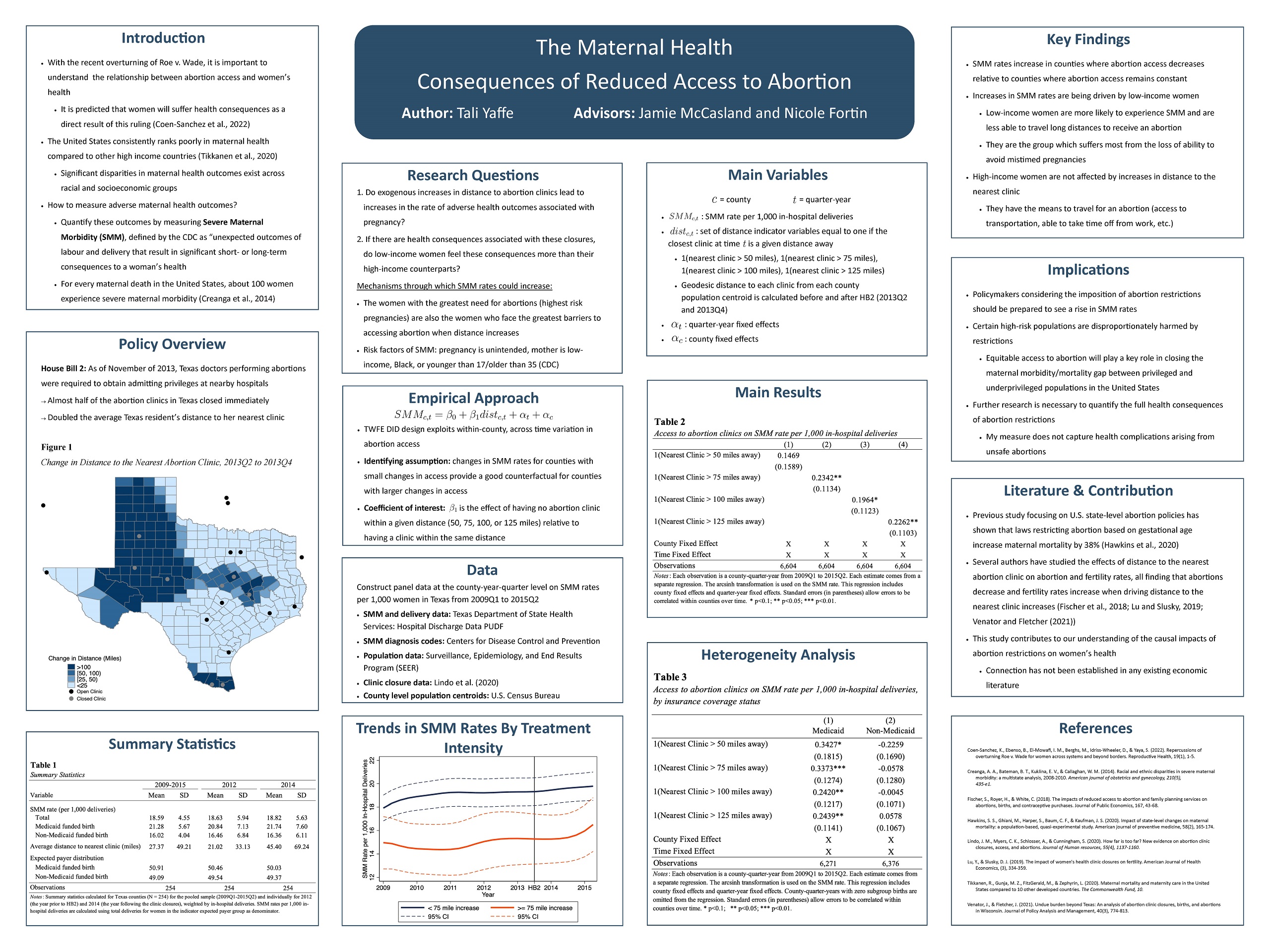
 When members of different ethnic groups share a superordinate goal of working together to obtain mineral resources, intergroup cooperation is facilitated and hostility is moderated. This paper shows that both interethnic contact and mining activity increase the probability of armed conflict when analyzed separately at the cell-year level. However, the combined effect of interethnic contact and mining activity significantly mitigates the chance of conflict. In some cases, the overall effect is negative, resulting in a reduction in armed conflict. A variety of identification strategies are used and results are robust to alternate specifications, which suggests that the relationship is causal.
When members of different ethnic groups share a superordinate goal of working together to obtain mineral resources, intergroup cooperation is facilitated and hostility is moderated. This paper shows that both interethnic contact and mining activity increase the probability of armed conflict when analyzed separately at the cell-year level. However, the combined effect of interethnic contact and mining activity significantly mitigates the chance of conflict. In some cases, the overall effect is negative, resulting in a reduction in armed conflict. A variety of identification strategies are used and results are robust to alternate specifications, which suggests that the relationship is causal.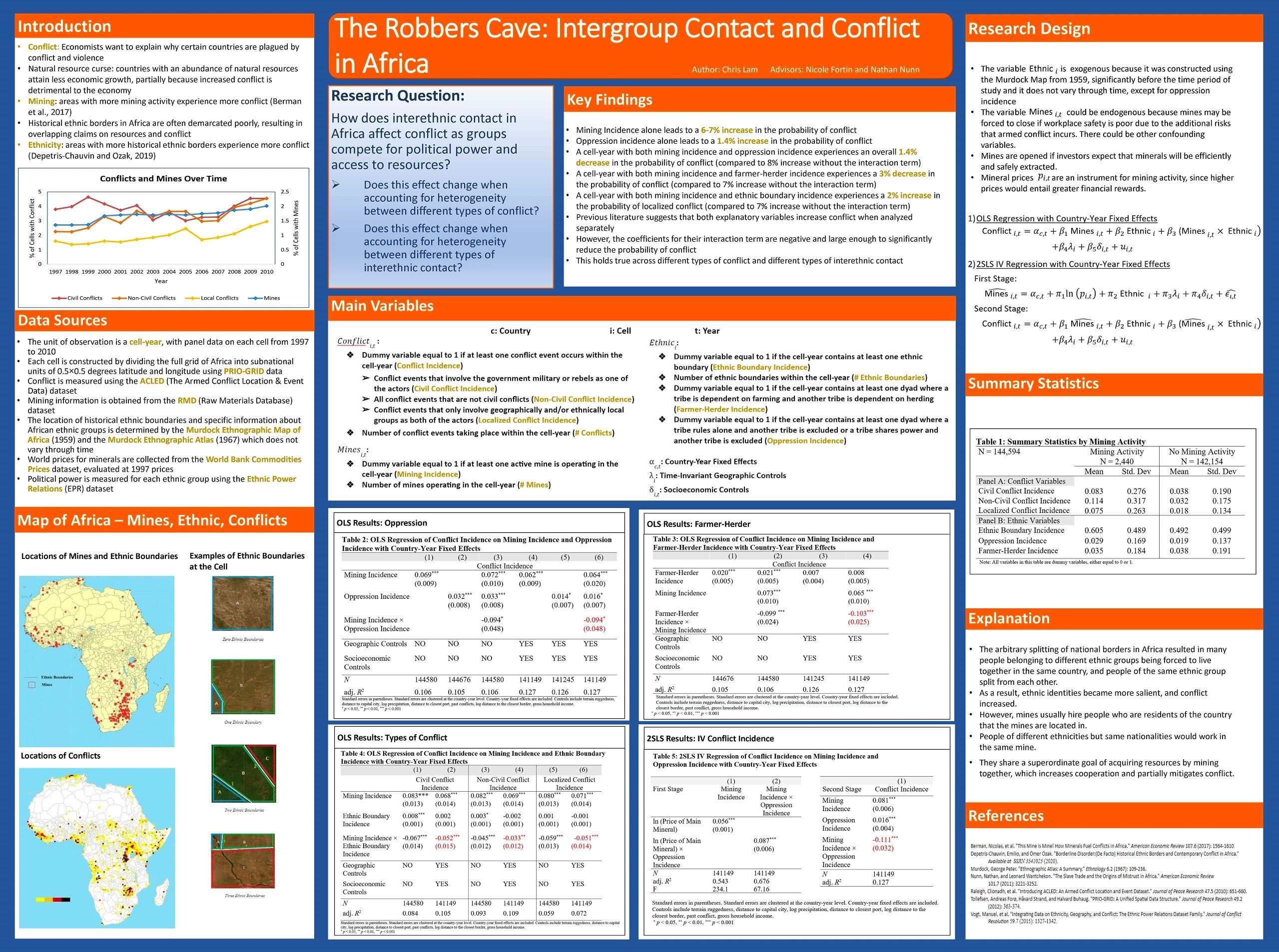
 The aim of this paper is to investigate the distributive effects of monetary policy on wealth inequality, with a focus on the Canadian context. While most recent literature acknowledges the distributive implications of monetary policy changes on wealth inequality, most recent studies use data from the United States and the United Kingdom. Therefore, this research hopes to further explore the relationship between monetary policy and wealth inequality in the Canadian context. This research adopts a two-step approach, drawing from similar studies in the field, that includes both macro and micro analyses. The macro analysis involves estimating a Proxy Structural Vector Autoregression (SVAR) model using various monetary and financial indicator variables to measure the impacts of monetary policy shocks on key financial and real variables. The results of the macro analysis are then combined with household-level microdata to simulate the effect of these changes on household balance sheets over three different time horizons. The findings suggest that wealth inequality increases after a contractionary monetary policy shock, with the effects becoming more pronounced over time. The study highlights the role of housing prices and debt in driving these distributional impacts in Canada, with stocks having a relatively lower impact.
The aim of this paper is to investigate the distributive effects of monetary policy on wealth inequality, with a focus on the Canadian context. While most recent literature acknowledges the distributive implications of monetary policy changes on wealth inequality, most recent studies use data from the United States and the United Kingdom. Therefore, this research hopes to further explore the relationship between monetary policy and wealth inequality in the Canadian context. This research adopts a two-step approach, drawing from similar studies in the field, that includes both macro and micro analyses. The macro analysis involves estimating a Proxy Structural Vector Autoregression (SVAR) model using various monetary and financial indicator variables to measure the impacts of monetary policy shocks on key financial and real variables. The results of the macro analysis are then combined with household-level microdata to simulate the effect of these changes on household balance sheets over three different time horizons. The findings suggest that wealth inequality increases after a contractionary monetary policy shock, with the effects becoming more pronounced over time. The study highlights the role of housing prices and debt in driving these distributional impacts in Canada, with stocks having a relatively lower impact.
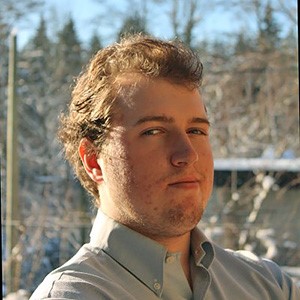 Canadian exports dropped by nearly 30 % in March of 2020 before shapely recovering. Which industries were most impacted, and how can the government smooth-out export shocks? To examine the first question, I develop a novel measure of industry complexity based on centrality in inter-industry flows. Using a sample of Canadian export data to all countries, I show that the top decile of complex industries experienced a 5.47 B (CAD) decrease in exports over the bottom decile in industries. Using multiple event studies, I show that the GVAC outperforms the literature’s foremost measure of identifying vulnerable industries.
Canadian exports dropped by nearly 30 % in March of 2020 before shapely recovering. Which industries were most impacted, and how can the government smooth-out export shocks? To examine the first question, I develop a novel measure of industry complexity based on centrality in inter-industry flows. Using a sample of Canadian export data to all countries, I show that the top decile of complex industries experienced a 5.47 B (CAD) decrease in exports over the bottom decile in industries. Using multiple event studies, I show that the GVAC outperforms the literature’s foremost measure of identifying vulnerable industries.